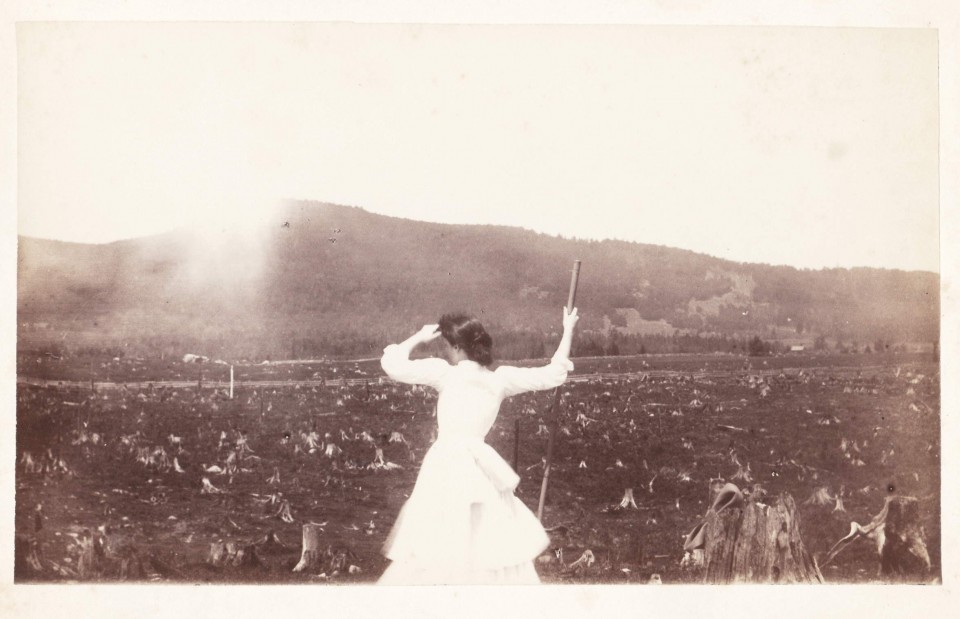The Path of Destruction

Logging continued without restriction as the pulp mill industry slipped into high gear during the 1880s. Clear cuts became the norm because pulp mills could use trees of all sizes. The fires that followed the woodsmen left behind a blackened, gnarled landscape. 1886 was a watershed year: more than 12,000 acres were burned in the Zealand Valley. On July 7, 1886, Marian Pychowska was hiking just off the Davis Path when she noticed a fire. “Earlier in the day we had noticed the smoke that rose from behind Mount Franklin. Now it had filled Crawford Notch and drifted way round to Conway, while great yellow-brown volumes rolled up from the increasing fire, making the southern landscape all lurid.” The fire was still raging on July 16 when George N. Cross recorded in his diary:
All day great volumes of smoke have been rolling up from a mighty forest fire on the other side of the Carters in the great wilderness. Tonight there is a lurid light above the treetops. Only rain will extinguish this fire.
The smell of smoke reached the state capital and ashes covered the drying laundry in Manchester. After the 1886 fires, “public opinion moved slowly toward a conservationist view, not only among summer visitors but [also] within the state.” During the 1890s, there were up to 800 fires a year. All concerned with the long-term vitality of the White Mountains called for change.

- The Weeks Act of 1911
- Tourists & Travelers
- Word Gets Out
- The Farmers Left; The Hotels Came
- Private Hands
- Arrival of the Loggers
- Need for Management
- Departure of the Forests
- Logging Photos
- The Tourists Continue to Arrive
- Educated Tramps and ‘Culchowed’ Pedestrians
- Tourist Photos
- The Path of Destruction
- AMC and Hiking Photos
- Suffering the Consequences
- Scarred Landscapes
- Proposals for Public Purchase
- Advocating for the Forests
- A Spokesman for the Trees
- Spreading the Message
- Progress Toward the Weeks Act
- Yet the Destruction Continued
- The Final Push
- Ralph Waldo Emerson, “Nature”
- Return to Exhibition Info